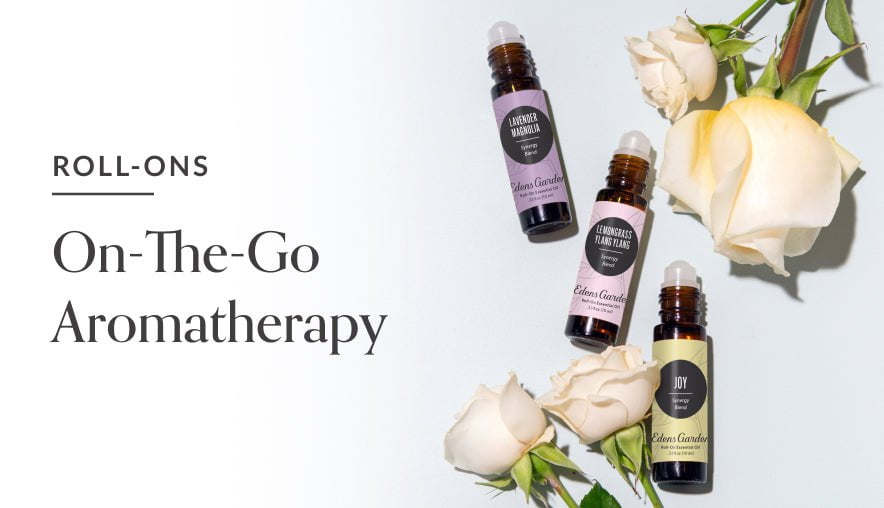Can I Combine Essential Oil Blends? - AAA

To blend blends or not to blend blends, that is the question. Turns out blend blending is not just a tongue twister, it's a topic EG customers frequently ask about. For example, can you obtain the benefits of multiple blends by combining them? What happens if you combine blends that have opposite effects? And is it possible to create a harmful combination by combining blends? We answer all these questions and more in today’s blog.
Can I Combine Essential Oil Blends?
Could you? Sure! Should you? Well, probably not. In most cases, essential oil blends are formulated for one primary purpose and adding more than one essential oil to your blend could take away from the blend’s intended purpose. Read on for a deeper look as to why that is.
Can You Benefit From Multiple Blends By Combining Them?
Say you have a cold and you’re nearing bedtime. You call upon your trusty essential oil blends to help open airways and ease you into dreamland. Rather than using your essential oils separately, you decide to add a few drops of each blend to your essential oil diffuser. An hour passes and the essential oils’ effects still haven’t kicked in. What happened?
While it may seem counterintuitive, combining too many essential oils can take away from a blend’s effectiveness. This may seem to go against previous comments from EG experts about the beneficial synergistic effects that are created when essential oils are blended together. However, synergies are most effective when essential oils are selected for a singular purpose.
A blend that is specifically meant for anxiety is going to be more effective at easing anxiety than a blend that is specifically meant for sleep but also has some anxiety-relieving properties. Likewise, a respiratory blend is going to be more effective on its own, rather than combined with a blend for sleep.
What Happens When You Combine Two Opposing Blends?
Will the Earth stop spinning if you combine Good Night and Good Morning? Is a blend of Uplift and Tranquility going to catalyze an explosion? What happens if you combine two blends with opposite effects? Likely nothing. Far less exciting than what you might’ve imagined, but nonetheless, true.
While we haven’t tested what happens with every opposing blend we offer, we’ve found that no effect occurs with those we have experimented with. In a way, the opposing blends cancel each other out because too many additional oils are added, minimizing each blend’s effects.
Are There Any Essential Oils That Shouldn’t Be Blended Together?
In other words, could you create a harmful combination by combining two otherwise harmless essential oils? After all, there are plenty of chemicals you shouldn’t mix (bleach and ammonia, for example).
Luckily, the answer is no – there are no two harmless essential oils that become harmful when combined.
This doesn’t mean that essential oils are without safety considerations. For example, some essential oils have recommended dilution rates to prevent sensitization, phototoxic warnings or should be avoided when taking certain medications. They are not made more dangerous when combined with other essential oils, but their safety concerns should always be considered when blending essential oils.
Exceptions To Blending Blends
Combining blends doesn’t always render the resulting combination useless. Adding two blends, each containing 2-3 oils, could create an effective blend. Anxiety Ease (a blend of Sweet Orange essential oil, Ylang Ylang essential oil and Lemongrass essential oil) and Balance (a blend of Lavender essential oil, Geranium essential oil and Sandalwood essential oil) are two blends formulated to balance mood. When combined, they can work to mutually enhance each other.
However, the benefits of an essential oil blend become muddled when combining two blends, each containing 5-6 essential oils that aren’t formulated for the same purpose.
Adding 1-2 additional essential oils to your blend? As long as you're adding a minor amount, this shouldn’t be enough to minimize the effects of your blend. In fact, we’re personal fans of adding a few drops of Clary Sage to Good Night, Tea Tree oil to Skin Love and Cinnamon Bark to Cocoa Vanilla.
It’s also still possible to benefit from two essential oils at once. For example, if you want to open airways while promoting sleep, dilute your respiratory blend with a carrier oil such as Fractionated Coconut oil and apply it topically to your skin. Meanwhile, add your essential oil diffuser recipe for sleep to your diffuser 30 minutes prior to bed. This way you can use both blends together without combining them.
If both blends you want to use are best diffused, then it’s recommended that you use each diffuser blend separately. The same goes for blends that work best when applied topically – allow some space in between each topical application.
Essential Oil Blends That Wow
Each of Edens Garden’s 100% pure essential oil blends are expertly formulated to be effective and sophisticated in aroma. From easing pain and anxiety to boosting mood and the immune system, we offer a wide range of blends that combat everyday issues. Try EG favorites like Eucalyptus Cardamom, Rose Bergamot, Lemon Mandarin and Frankincense Lime. Or experience your own essential oil blending with our thoughtfully crafted diffuser recipes. The oily possibilities are endless at Edens Garden.
Sources:
- Aromatic Blending of Essential Oils | AromaWeb https://www.aromaweb.com/articles/aromaticblending.asp
- What Are the Best Scents to Wake You Up? - Sleep.org https://www.sleep.org/sleep-environment/scents-to-wake-you-up/
- Blending 101: The Art of Pairing Essential Oils Drop by Drop
https://achs.edu/blog/2018/03/09/blending-101-the-art-of-pairing/








Leave a comment (Comments will be approved before showing up)